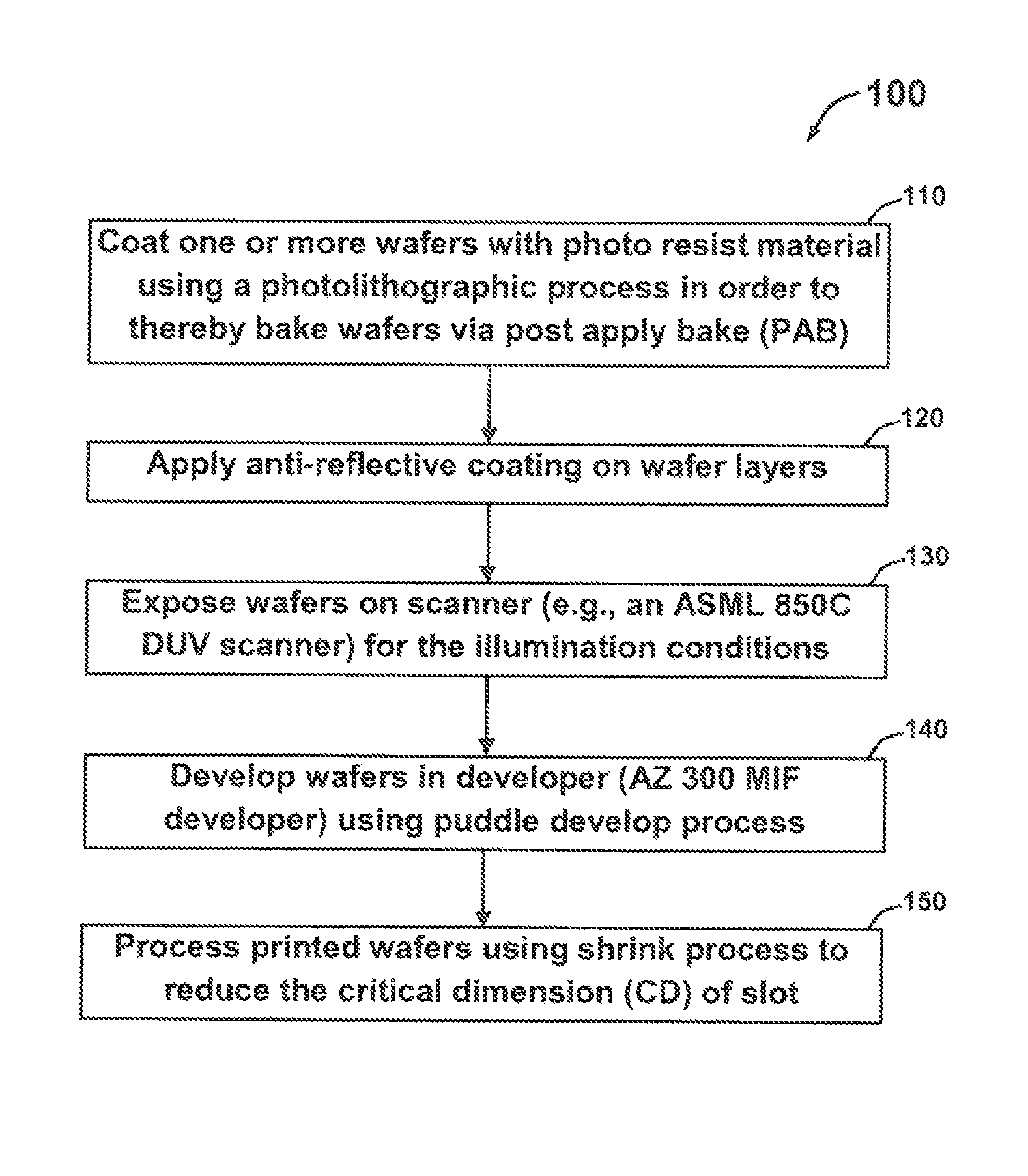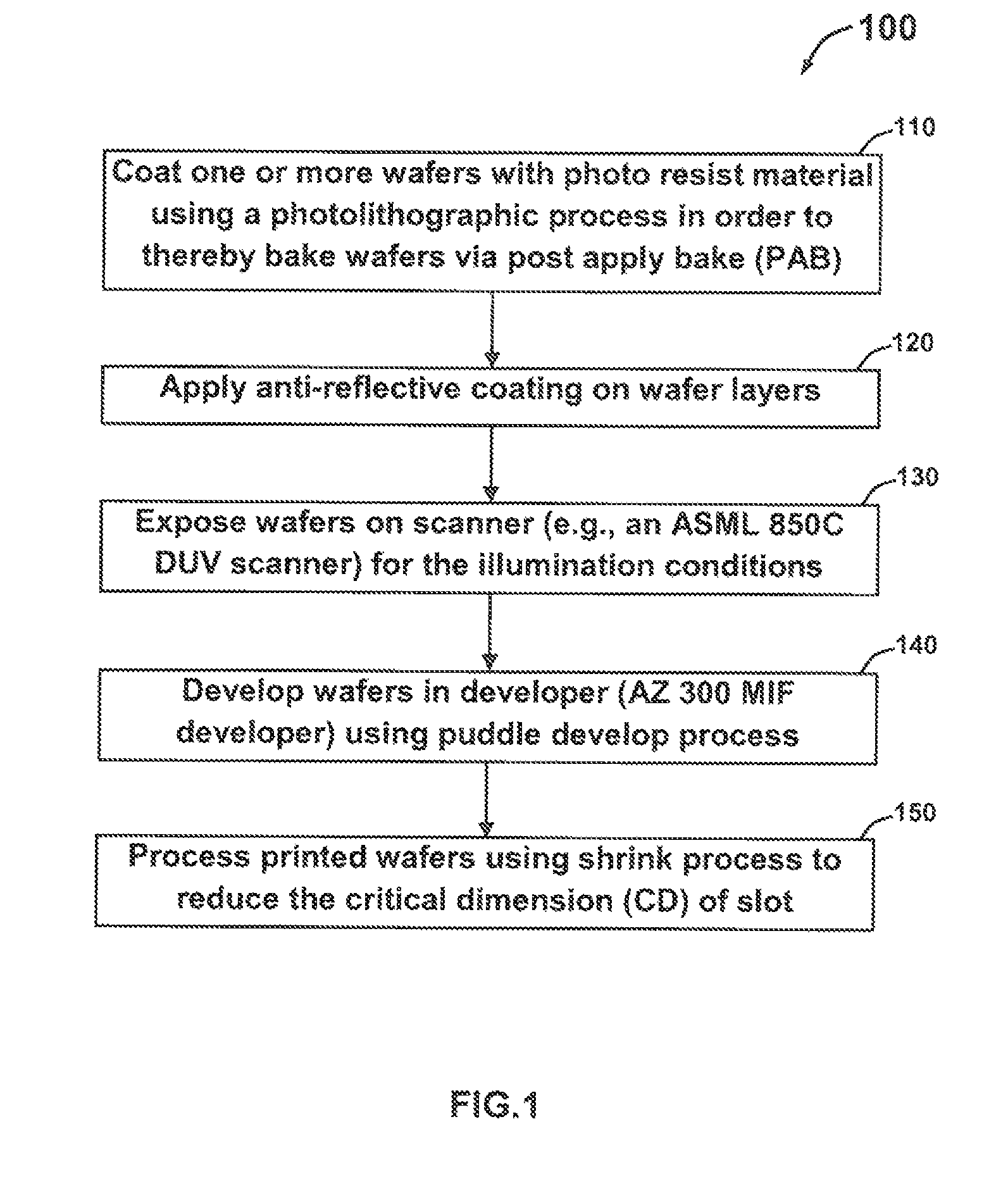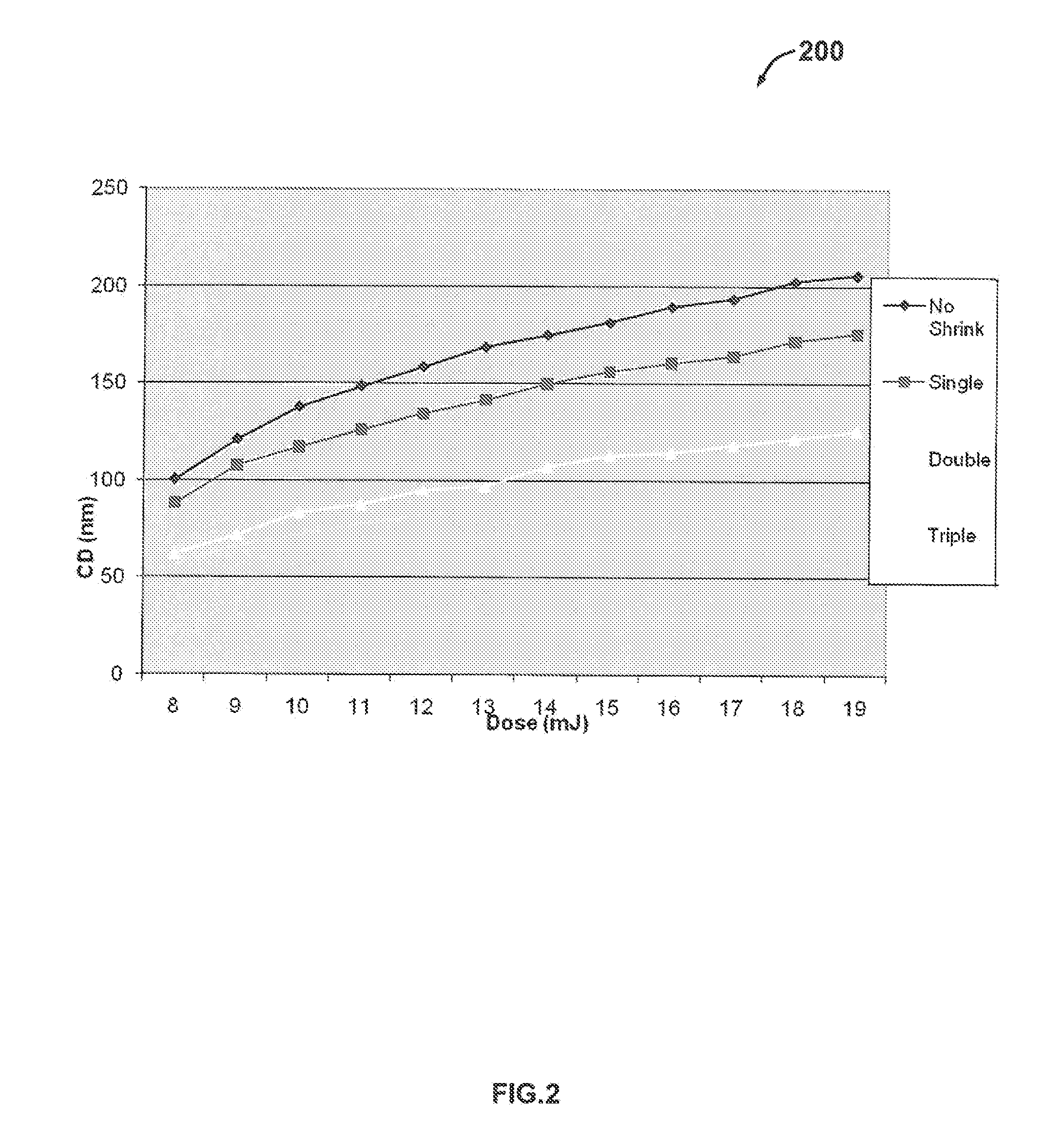Asymmetric slotted waveguide and method for fabricating the same
a technology of slotted waveguides and waveguides, which is applied in the field of slotted waveguides, can solve the problems of increasing the amount of contaminants in the waveguide structure, slow and fast fabrication methods of strip loaded waveguides, and difficulty in achieving the desired high accuracy, etc., and achieves enhanced coupling and shrinking the critical dimension of the features of printed wafers.
- Summary
- Abstract
- Description
- Claims
- Application Information
AI Technical Summary
Benefits of technology
Problems solved by technology
Method used
Image
Examples
Embodiment Construction
[0018]The particular values and configurations discussed in these non-limiting examples can be varied and are cited merely to illustrate at least one embodiment and are not intended to limit the scope thereof.
[0019]FIG. 1 illustrates a high level flowchart of operation illustrating logical operational steps of a method for fabricating an asymmetric slotted waveguide, in accordance with the disclosed embodiments. The slotted waveguide is constructed in silicon-on-insulator using a Complementary metal-oxide-semiconductor (CMOS) process. Silicon-on-Insulator Resonators comprising high-Q micro rings were fabricated from thin silicon-on-insulator (SOI) layers. Measured Q values of 45 000 were observed in these rings, which were then improved to 57 000 by adding a PMMA cladding. Various waveguide designs were calculated, and the waveguide losses were analyzed. It is recognized that several forms of silicon on insulator, such as SOI comprising wafers having a silicon oxide layer fabricated...
PUM
| Property | Measurement | Unit |
|---|---|---|
| critical dimension | aaaaa | aaaaa |
| semiconductor | aaaaa | aaaaa |
| thickness | aaaaa | aaaaa |
Abstract
Description
Claims
Application Information
 Login to View More
Login to View More - R&D
- Intellectual Property
- Life Sciences
- Materials
- Tech Scout
- Unparalleled Data Quality
- Higher Quality Content
- 60% Fewer Hallucinations
Browse by: Latest US Patents, China's latest patents, Technical Efficacy Thesaurus, Application Domain, Technology Topic, Popular Technical Reports.
© 2025 PatSnap. All rights reserved.Legal|Privacy policy|Modern Slavery Act Transparency Statement|Sitemap|About US| Contact US: help@patsnap.com



